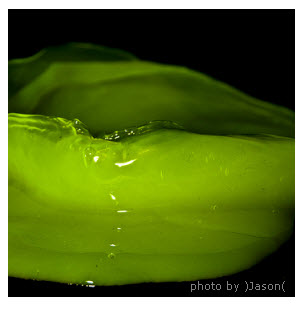How to Develop a Borax Slime Science Project
Step 1. Topic
You have your topic, which is: Making Slime
Step 2. Research
Research is learning about your topic. A good way to learn about slime is do an exploratory investigation about making slime.
Exploratory Investigations: These are generally simple experiments performed for the specific purpose of gathering information about a topic, such as slime.
Following is an exploratory investigation about slime. This investigation is basically a simple how-to recipe for making slime.
I suggest that you perform the experiment and answer all the questions before you proceed to step 3.
Exploratory Investigation: Making Slime
Purpose: To make and learn about borax slime.
Procedure
1. In a small jar, make a Borax Solution. Do this by mixing 1 teaspoon of borax in 1 cup of tap water. Stir well.
2. In a small jar, make a Glue Solution by mixing one 1/2 cup (4-oz bottle of Elmer’s White School Glue) with 1/2 cup of tap water. Add 5 drops of green food coloring. Stir Well.
3. At the same time, pour the glue solution and the borax solution into a bowl (at least a 2 quart size).
4. If you are not allergic to borax, stir the mixture with your hands, and then dip out the slime. Knead the slime with your hands until it is dry.
5. Investigate the macroscopic physical properties of the borax slime using the following direction.
a. Determine the elasticity of the borax slime by rolling it into a ball and dropping it on a flat surface.
Elasticity is the property of a material that returns to its original shape after being deformed. A ball that bounces does so because it is elastic. When an elastic ball is dropped, the surface of the ball is deformed (flattens) when the balls surface pushes out again as it returns to its original shape, the ball pushes against the floor and the floor pushes back. Thus the ball bounces upward.
b. Roll the slime into a cylinder shape (like a very fat pencil). Place the ends of the roll in your hands, and then quickly pull your hands apart as if to stretch the roll of slime.
Does the slime roll stretch? If not, what happens?
c. Again roll the slime into a ball shape, and then set the slime ball on a hard surface.
Does the slime ball keep its shape? If not, what happens?
d. Again roll the slime ball into a ball shape, and then set the slime ball on a hard slanted surface. This can be a flat tray that is raised at one end.
Does the ball roll down the inclined (raised) surface? If not, what happens?
The borax slime has unusual properties because of its viscosity. Viscosity is the measure of resistance a fluid (gas or liquid) has to flowing. The higher the viscosity the slower a fluid flows. The lower the viscosity, the faster a fluid flows.
The viscosity of oil, which is a Newtonian fluid, decreases with an increase in pressure. In other words, with more pressure, molecules of oil will more quickly flow past each other.
The viscosity of the borax slime, which is classified as a non-Newtonian fluid, increases with pressure. This means the borax slime becomes more viscous under pressure. Because of this increase in viscosity, the borax slime is more like a solid and with a quick jerk will pull apart.
Step 3. Variables
This step in developing a science project is to identify variables, which are things that can change. A Science Project Investigation should keep all variables constant except for two. The two changing variables are an independent variable, which when changed may cause the second variable called the dependent variable to change. For more information about variables and examples of variables for a slime science investigation, see Science Project: Slime Investigation Variables.
Guide to the Best Science Fair Projects
(Paid Link)

